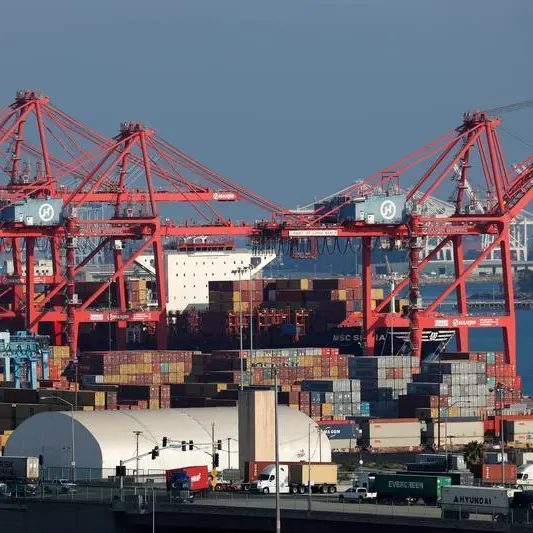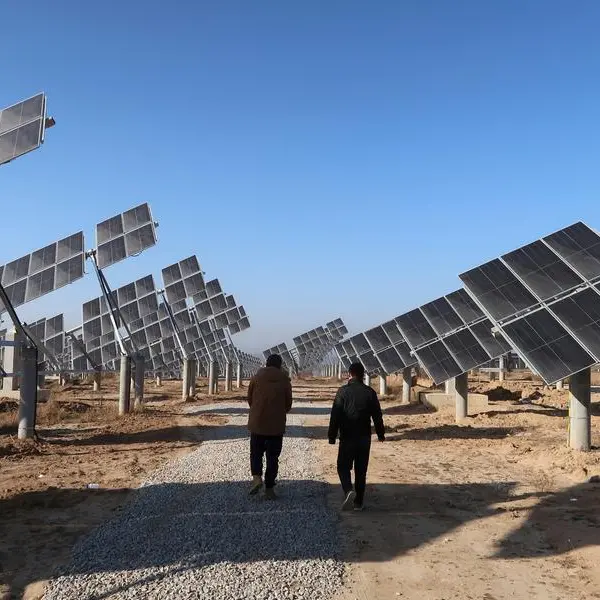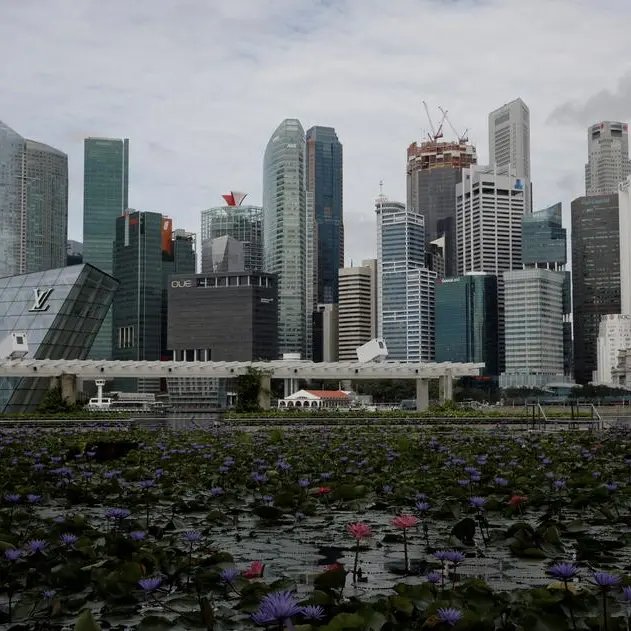PHOTO
LAGOS - As African countries race to build homes for their soaring populations, material shortages and under-investment threaten to limit the scope of a green revolution in the continent's construction industry.
The building boom presents a huge opportunity to turbocharge Africa's clean energy transition by adopting green design techniques and climate-friendly materials to slash the emissions caused by building houses.
About 70% of the buildings that will exist in Africa in 2040 are yet to be constructed. So making these buildings greener - like building them with renewable materials or making sure they require less energy to run - could have a major climate impact.
It could also determine how protected people are from the effects of the climate emergency, which is sparking longer and more frequent droughts, storms and floods across Africa.
But there are still many challenges to building more sustainably, as Nigerian architect Eshemokhai Akpene found out.
When he was commissioned to design 60 condo units in a Lagos suburb, he planned to use sustainable materials like timber and weather-resilient clay instead of conventional concrete, which has a heavy carbon footprint.
After months of searching for local wood, Akpene was forced to commission an Indonesian firm to build whole timber frames for the apartments and fly them in from Bali along with carpenters to install them. It tripled the overall budget.
"Most of the green building materials are imported from overseas, so it is just not a viable option for real estate developers," Akpene said.
He said few local carpenters had the skills to make timber for construction and West African loggers were not producing the quantity he would need.
Africa, which accounts for less than 4% of global emissions, is not alone in facing the challenge of reducing the carbon emitted when making a building.
The global buildings and construction sector is responsible for nearly 40% of carbon emissions, which means the way buildings are designed, constructed and operated will have to change radically if global warming is to be limited to 1.5 degrees Celsius.
Caitlin Wale, founder of African climate tech accelerator Kinjani, said the dominant narrative of Africa being one of the areas worst-hit by climate change could mask the "huge opportunity" offered by the continent's building boom.
She said the speed of development meant Africa could rapidly innovate at scale, using the surge in working-age people and abundant natural resources to create new green building materials.
"Just like with the mobile phone, we don't have to go through the landline just because the Global North did it," she said.
"We have the potential to grow green from the start."
BACK TO THE FUTURE
Nigeria's population is projected to almost double to 400 million by 2050, and already it has a housing deficit of around 28 million units.
But the cutting-edge technologies and processes needed to green the building sector - such as the production of lower-carbon cement - have often been developed by firms based in Europe and North America.
"Even when we set up industries, we import the processes, the technology, and the outcome is therefore better suited to other climes and that's affected the kind of architecture that we get," said Ayodele Arigbabu, a member of the Nigerian Institute of Architects.
Before Nigeria became industrialised at the turn of the 20th century, builders used local materials like red clay bricks instead of concrete, Arigbabu added.
The bricks were more suited to the country's tropical climate than concrete and more weather-resilient, he added.
There are also homegrown innovations in Africa. Wale noted that scientists are developing ways to use mining waste and biochar, produced from heating biomass, as a substitute for cement in concrete.
However, the problem is financing. She said there isn't a mature investment ecosystem to support startups at each stage of growth, like in Silicon Valley, and different funding mechanisms are needed - from development grants to private investment.
LEADING FROM THE TOP
Industry experts said governments have a key role to play through mandatory building codes and through their large-scale procurement of building materials.
By investing in green alternatives, governments can help drive the industry while also proving new processes are safe and reliable, said Lindsay Rasmussen, a senior associate at Third Derivative, a climate tech accelerator run by the non-profit RMI.
"That takes a lot of risk and liability concerns away from the rest of the industry and the private developers," she said.
For example, in India, she said, the government is working on regulations to promote the adoption of 'LC3', or limestone calcined clay cement, which requires fewer materials to be imported and can reduce the emissions associated with cement production by up to 40%.
Akpene, who said Nigeria's government could give tax incentives to local companies manufacturing energy-efficient building materials, agreed that government policy was crucial.
"It has a chain reaction. If the government wants a lot of green architecture, it has to take the lead," he said.
(Reporting by Bukola Adebayo in Lagos and Jack Graham in London; Editing by Clar Ni Chonghaile. The Thomson Reuters Foundation is the charitable arm of Thomson Reuters. Visit https://www.context.news/)





















